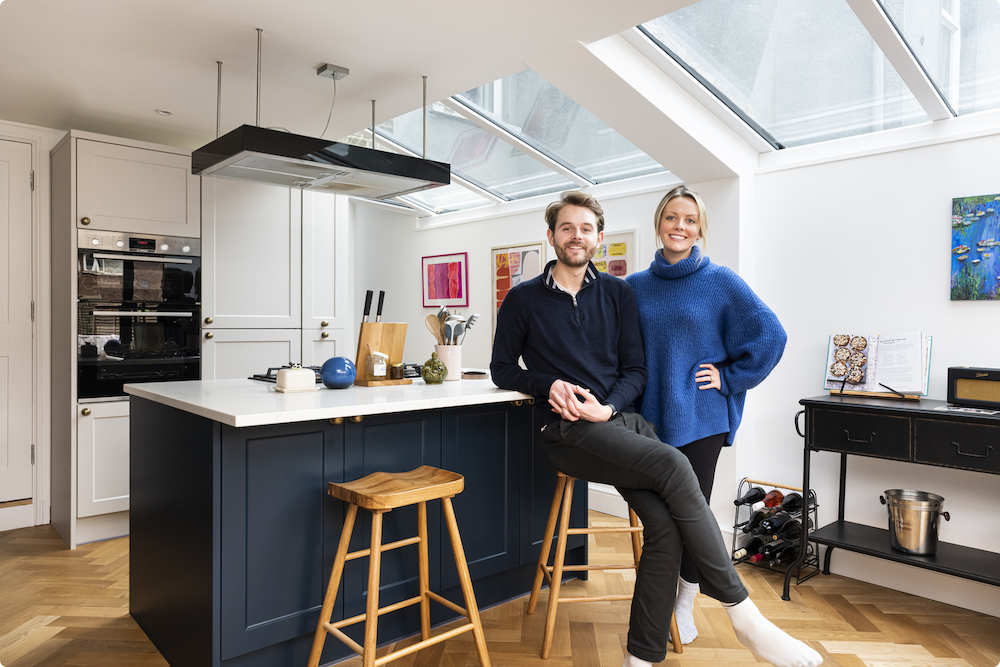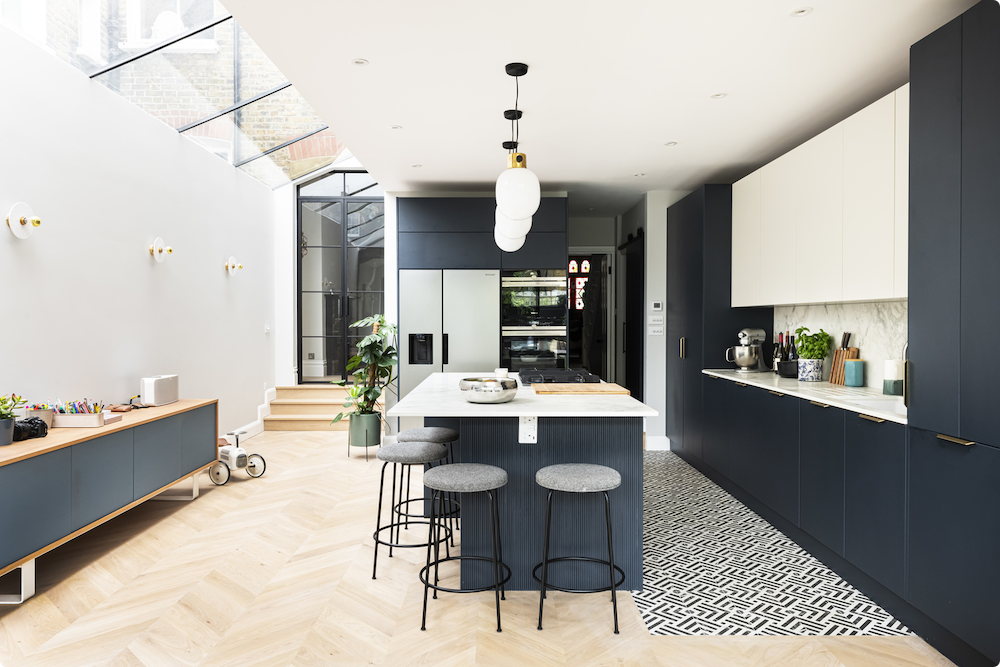How to prepare for a kitchen diner extension?
When it comes to undertaking an extension project, it’s really important to ensure that you’re ready to take on the disruption, cost and time that comes with it. Here are some important factors to consider:
Think of the type of extension you can get for your house
The type of kitchen diner extension you can get will be dependent on the shape and size of your existing property. For example, if you have a terraced house with no available space to the sides, you may opt for a rear kitchen extension to take advantage of the back garden space you have at your disposal.
Owners of Victorian terraced houses, on the other hand, often do have unused alleyway space to the side of the property that can be built in to extend the kitchen area and create a kitchen diner. If you’re fortunate enough to have a house with ample available space to both the side and rear of your property (for example, a detached or semi-detached house), a wraparound extension could be a great option for you.

© Veronica Rodriguez
Think about the type of layout you want your kitchen diner to have
Another important consideration when you’re planning your kitchen diner extension is what type of layout you’d like the eventual room to have. There are a number of different kitchen layout options to choose from – here is just a flavour of a few:
- Island - This type of layout puts the kitchen island at the centre of the room. Kitchen island installation is one of the most popular renovations homeowners will make to their kitchens and for good reason. Introducing a kitchen island to your kitchen can create a dual use for the room – vital surface area for food preparation and a casual dining area. If you’re a particularly keen host and have room to play with, we’d recommend opting for a large kitchen island that you can fit multiple seats around.
- U-shape kitchen - The U shaped kitchen layout is an enduringly popular choice for creating more space in a kitchen. Essentially, three counters form a U shape which offers homeowners plenty of space for both food preparation around the kitchen’s edge. It also provides plenty of empty floor space that can have a dining table moved into.
- L shaped kitchen - Unlike a U shaped kitchen space, an L shaped kitchen layout combines two countertops. This layout leaves plenty of open space in the centre of the kitchen that offers homeowners the opportunity to include a dining table and, if you have enough room, a chillout area too.
- Galley - Galley kitchens are sometimes referred to as corridor kitchens. They consist of two countertops facing one another and are often found in smaller houses or flats where space is scarce. Given their lack of space and arrangement, they don’t make particularly great candidates for kitchen diners. However, one option for this type of kitchen layout is to extend back into the garden to include a dining area towards the back of the house.
- Single wall - This kitchen layout does what it says on the tin. The kitchen appliances and countertops are all arranged on one single side of the room. This is a great option for creating ample space for the rest of the room, particularly if you have limited space to work with.
Consider natural light
Having natural light in our homes is proven to have beneficial effects on both our mental and physical health. Given its importance, we’d recommend that you consider where your natural light comes into the room and ensure that your kitchen design welcomes it in. Your chosen designer or architect will be able to advise on the best way to invite natural light into your home for your home. To learn more and discuss your ideas, book a free advice call with one of our friendly experts.
 © Veronica Rodriguez
© Veronica Rodriguez
Get coordinated
Once you’ve decided on your kitchen layout and extension type, opt for a dining table and chairs that fit with the shape and aesthetic of your home. Make sure that your table and chairs aren’t too large or small for the room as it could throw off the balance. And, unless you’re introducing a colour pop with your furniture choices, we’d suggest sticking to one particular shade of wood for the room.
How much does a kitchen diner extension cost?
Kitchen extensions can cost anywhere between £40,000 and £200,000 depending on the size and scale of the extension, the type of materials used and how long it takes to build. There are plenty of other considerations to take into account as well: the condition of the existing house, whether you’re staying at home during the renovations and whether you decide to coincide your kitchen diner extension with retrofitting.
Use our Quick Quote Calculator to get an idea of how much your kitchen diner extension ideas could cost you.
How long does it take to build a kitchen diner extension?
Home extensions of any kind are not an exact science and it can be tricky to estimate exactly how long it will take to be completed. This applies to kitchen diner extensions too, particularly as there are so many different options available and so much of the construction progress depends on the condition of your existing home. As a general rule of thumb, we’d suggest expecting at least 10 weeks of work for your kitchen diner extension but also being aware that it could take a lot longer.
 © Matt Gamble
© Matt Gamble

 © Veronica Rodriguez
© Veronica Rodriguez



